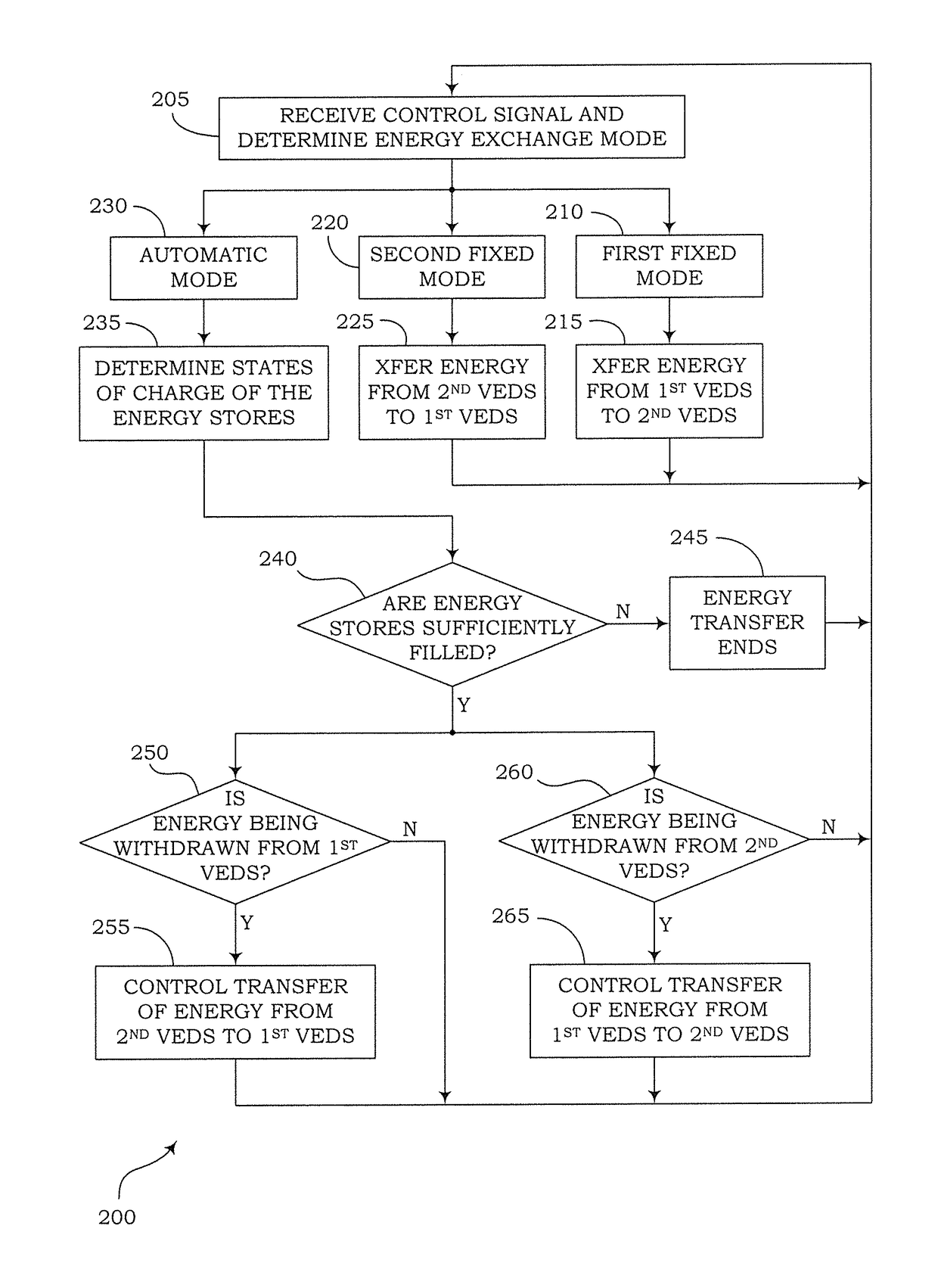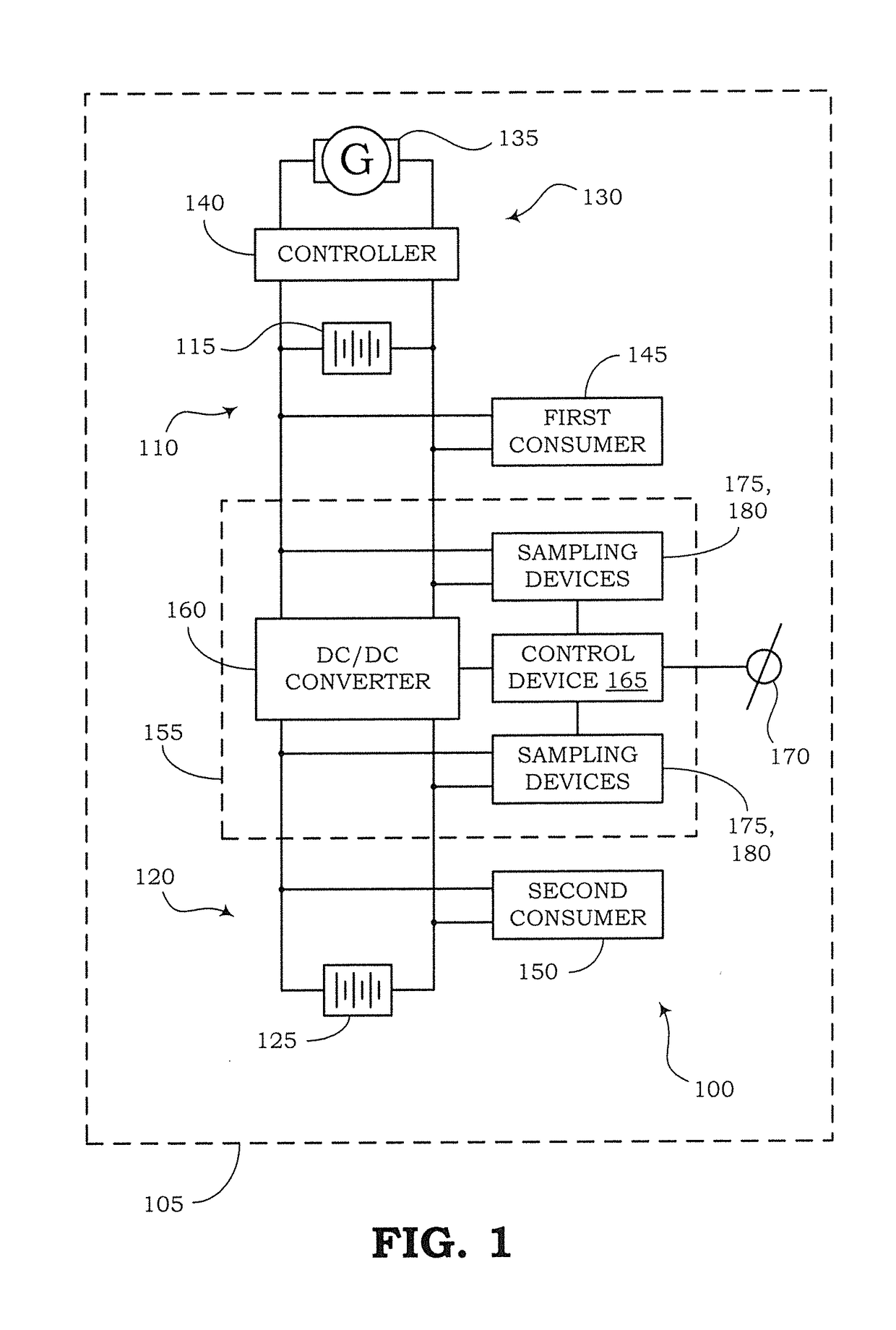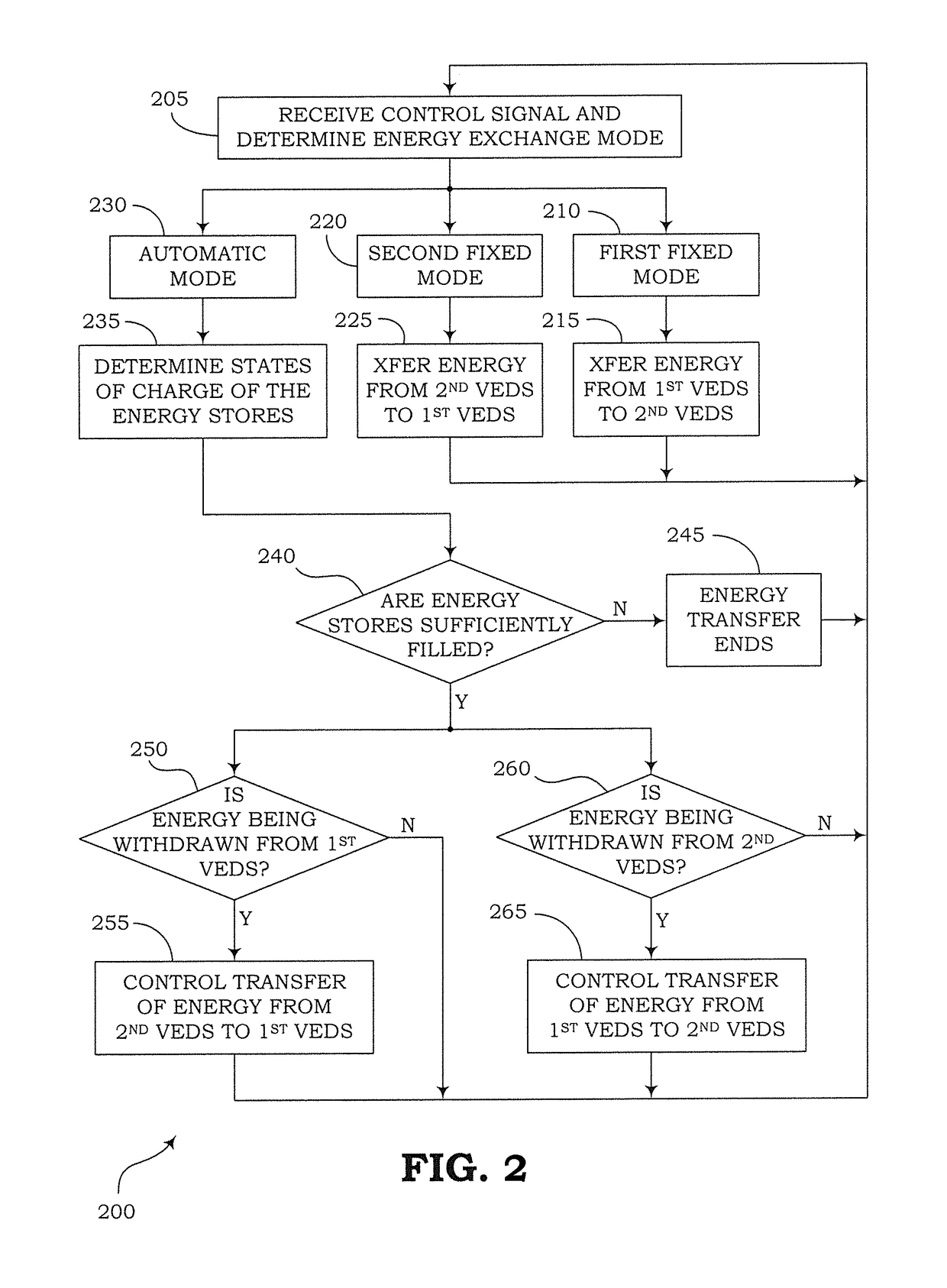Vehicle electrical distribution system stabilization
a technology for electrical distribution systems and vehicles, applied in the direction of electric vehicles, three-or-more-wire dc circuits, electric devices, etc., can solve the problems of known transfer devices responding too slowly, affecting the stability of the vehicle electrical distribution system, etc., to achieve the effect of improving energy compensation
- Summary
- Abstract
- Description
- Claims
- Application Information
AI Technical Summary
Benefits of technology
Problems solved by technology
Method used
Image
Examples
Embodiment Construction
[0025]FIG. 1 shows a system 100 onboard a motor vehicle 105. The system 100 comprises a first vehicle electrical distribution system 110 comprising a first energy store 115 and a second vehicle electrical distribution system 120 comprising a second energy store 125. The vehicle electrical distribution systems 110 and 120 preferably have different rated voltages. In particular, end-of-charge voltages of the energy stores 115 and 125 can be different than one another. This configuration can be selected, for example, when an electric drive or additional drive of the motor vehicle 105 is intended to be fed from the second vehicle electrical distribution system 120, for example. By way of example, it is assumed here that the rated voltage of the first vehicle electrical distribution system 110 is lower than that of the second vehicle electrical distribution system 120. The first vehicle electrical distribution system 110 has, for example, a rated voltage of 12 V, while the second vehicle...
PUM
 Login to View More
Login to View More Abstract
Description
Claims
Application Information
 Login to View More
Login to View More - R&D
- Intellectual Property
- Life Sciences
- Materials
- Tech Scout
- Unparalleled Data Quality
- Higher Quality Content
- 60% Fewer Hallucinations
Browse by: Latest US Patents, China's latest patents, Technical Efficacy Thesaurus, Application Domain, Technology Topic, Popular Technical Reports.
© 2025 PatSnap. All rights reserved.Legal|Privacy policy|Modern Slavery Act Transparency Statement|Sitemap|About US| Contact US: help@patsnap.com



